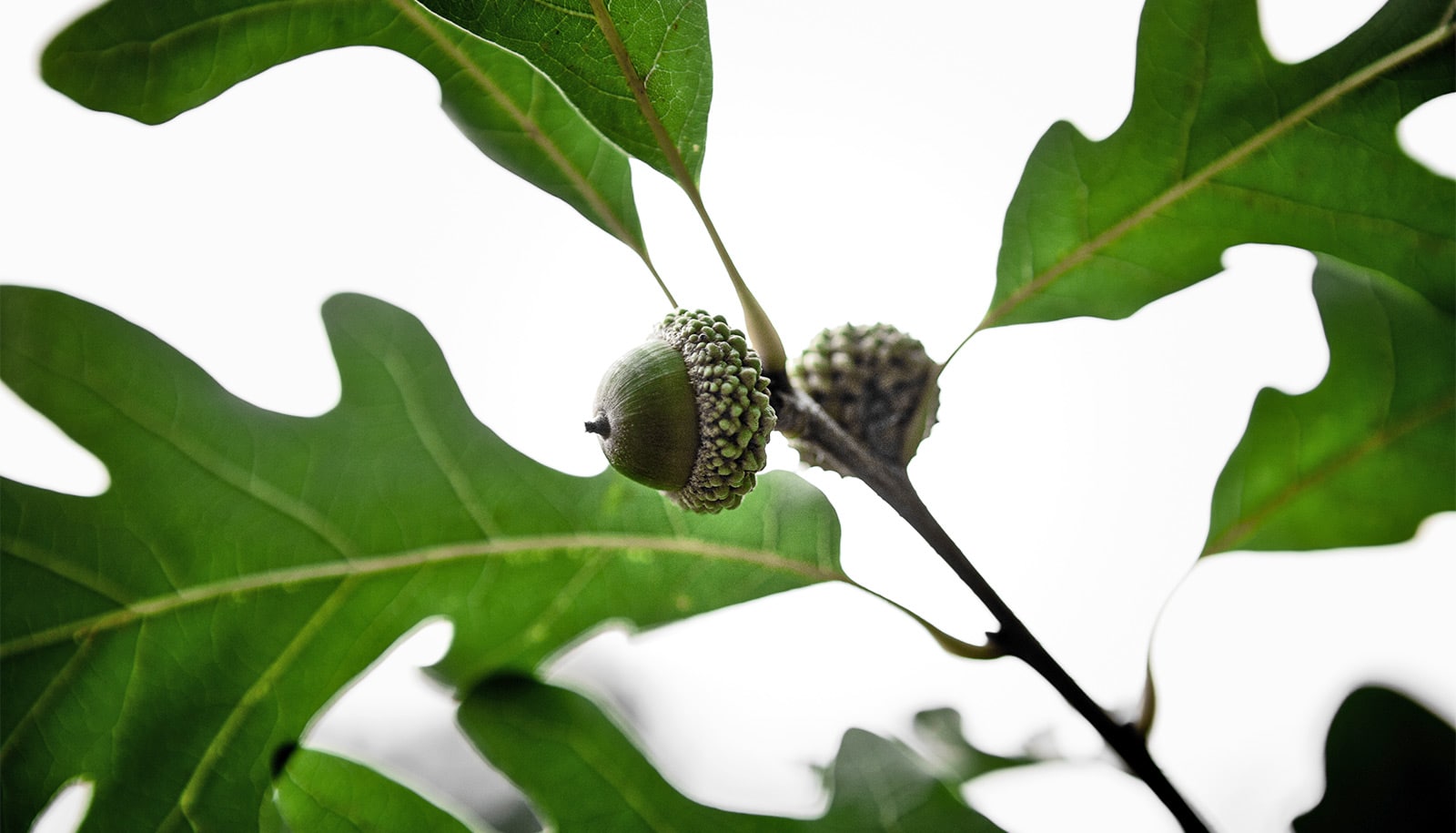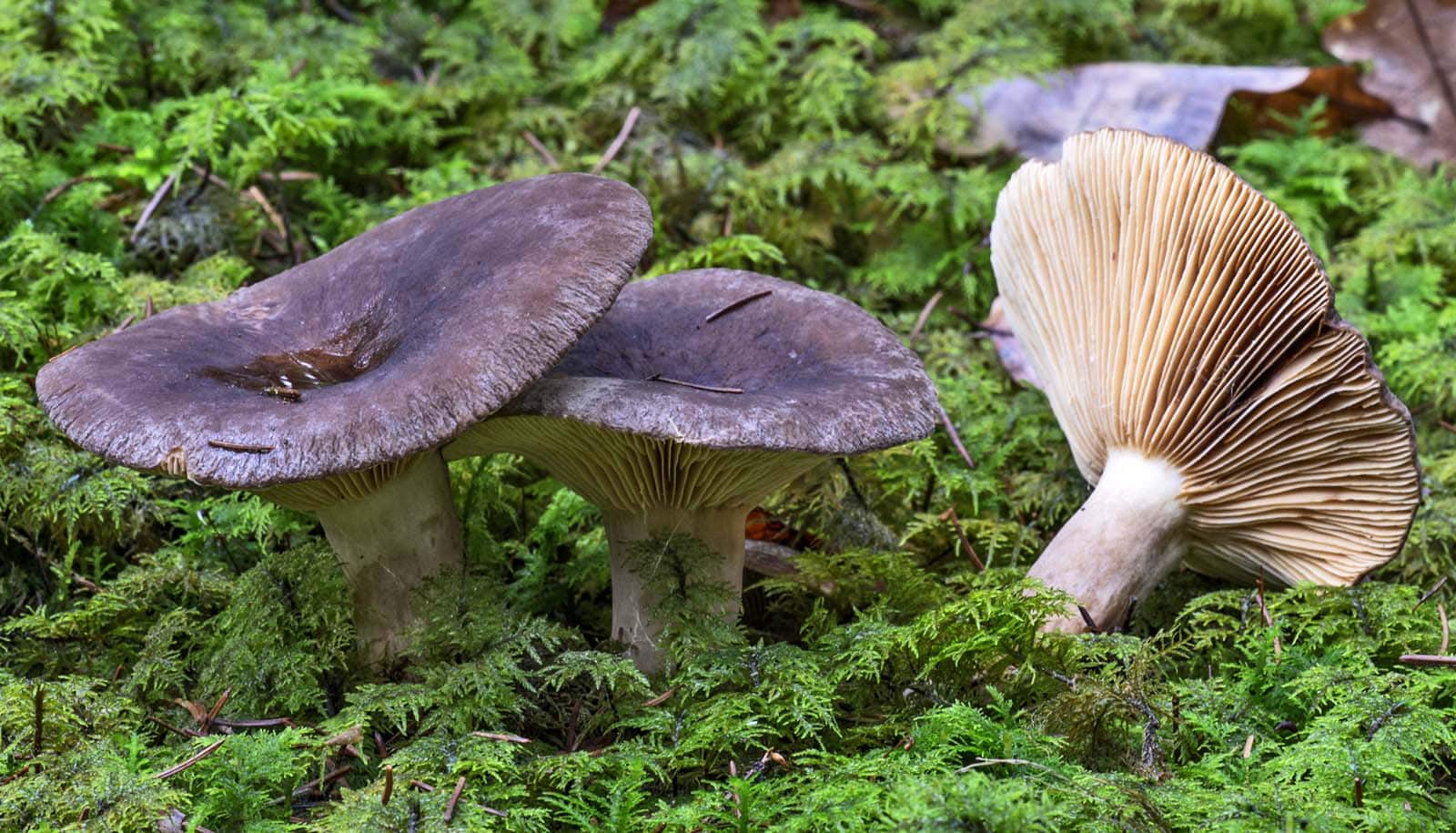Trees including oak and poplar will emit more isoprene—a compound that worsens air pollution—as global temperatures rise, according to new research.
It’s a simple question that sounds a little like a modest proposal.
“Should we cut down all the oak trees?” asks Tom Sharkey, a professor in the Plant Resilience Institute at Michigan State University.
To be clear, Sharkey wasn’t sincerely suggesting that we should cut down all the oaks. Still, his question was an earnest one, prompted by his team’s latest research, which appears in the Proceedings of the National Academy of Sciences.
The team discovered that, on a warming planet, plants like oaks and poplars will emit more of a compound that exacerbates poor air quality, contributing to problematic particulate matter and low-atmosphere ozone.
The rub is that the same compound, called isoprene, can also improve the quality of clean air while making plants more resistant to stressors including insects and high temperatures.
“Do we want plants to make more isoprene so they’re more resilient, or do we want them making less so it’s not making air pollution worse? What’s the right balance?” asks Sharkey, who also works at the Plant Research Laboratory and in the biochemistry and molecular biology department.
“Those are really the fundamental questions driving this work. The more we understand, the more effectively we can answer them.”
Sharkey has been studying isoprene and how plants produce it since the 1970s, when he was a doctoral student at Michigan State.
Isoprene from plants is the second-highest emitted hydrocarbon on Earth, only behind methane emissions from human activity. Yet most people have never heard of it, Sharkey says.
“It’s been behind the scenes for a long time, but it’s incredibly important,” Sharkey says.
It gained a little notoriety in the 1980s, when then-president Ronald Reagan falsely claimed trees were producing more air pollution than automobiles. Yet there was a kernel of truth in that assertion.
Isoprene interacts with nitrogen oxide compounds found in air pollution produced by coal-fired power plants and internal combustion engines in vehicles. These reactions create ozone, aerosols, and other byproducts that are unhealthy for both humans and plants.
“There’s this interesting phenomenon where you have air moving across a city landscape, picking up nitrogen oxides, then moving over a forest to give you this toxic brew,” Sharkey says. “The air quality downwind of a city is often worse than the air quality in the city itself.”
Now, with support from the National Science Foundation, Sharkey and his team are working to better understand the biomolecular processes plants use to make isoprene. The researchers are particularly interested in how those processes are affected by the environment, especially in the face of climate change.
Prior to the team’s new publication, researchers understood that certain plants produce isoprene as they carry out photosynthesis. They also knew the changes that the planet is facing were having competing effects on isoprene production.
That is, increasing carbon dioxide in the atmosphere drives the rate down, while increasing temperatures accelerate the rate. One of the questions behind the team’s new publication was essentially which one of these effects will win out.
“We were looking for a regulation point in the isoprene’s biosynthesis pathway under high carbon dioxide,” says Abira Sahu, the lead author of the new report and a postdoctoral research associate in Sharkey’s research group.
“Scientists have been trying to find this for a long time,” Sahu says. “And, finally, we have the answer.”
“For the biologists out there, the crux of the paper is that we identified the specific reaction slowed by carbon dioxide, CO2,” Sharkey says.
“With that, we can say the temperature effect trumps the CO2 effect,” he says. “By the time you’re at 95 degrees Fahrenheit—35 degrees Celsius—there’s basically no CO2 suppression. Isoprene is pouring out like crazy.”
In their experiments, which used poplar plants, the team also found that when a leaf experienced warming of 10 degrees Celsius, its isoprene emission increased more than tenfold, Sahu says.
“Working with Tom, you realize plants really do emit a lot of isoprene,” says Mohammad Mostofa, an assistant professor who works in Sharkey’s lab and was another author of the new report.
The discovery will help researchers better anticipate how much isoprene plants will emit in the future and better prepare for the impacts of that. But the researchers also hope it can help inform the choices people and communities make in the meantime.
“We could be doing a better job,” Mostofa says.
That could mean planting fewer oaks in the future to limit isoprene emissions. As for what we do about the trees already emitting isoprene, Sharkey does have an idea that doesn’t involve cutting them down.
“My suggestion is that we should do a better job controlling nitrogen oxide pollution,” Sharkey says.
Sarathi Weraduwage, a former postdoctoral researcher in Sharkey’s lab who is now an assistant professor at Bishop’s University in Quebec, also contributed to the research.
Source: Michigan State



